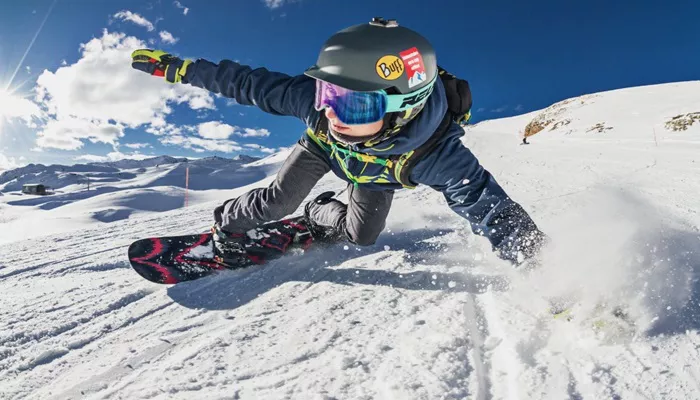Snowboarding is an exhilarating sport that blends speed, technique, and creativity. As an intermediate rider, you’ve likely mastered the basics and are now looking for a snowboard that can help you progress to the next level. Choosing the right board is crucial, as it affects your ability to carve, jump, and ride in various conditions.
In this article, we’ll explore the best snowboards for intermediate riders, considering factors such as board type, flex, shape, and terrain suitability. By the end, you’ll have a clear understanding of which snowboard will best support your progression.
1. Key Factors to Consider When Choosing an Intermediate Snowboard
Before diving into specific snowboard models, it’s important to understand the key factors that make a board suitable for intermediate riders.
Board Type
There are several types of snowboards, each designed for different riding styles:
All-Mountain: Versatile and great for a mix of groomed runs, powder, and park.
Freestyle: Designed for tricks, jumps, and terrain parks.
Freeride: Ideal for off-piste and backcountry riding.
Powder: Built for deep snow conditions with a wider nose and tapered tail.
Most intermediate riders benefit from an all-mountain snowboard, as it allows them to explore different terrains while improving their skills.
Flex Rating
Soft Flex (1-4): Easier to maneuver and great for park riding.
Medium Flex (5-7): Offers a balance of stability and playfulness, ideal for all-mountain riding.
Stiff Flex (8-10): Provides maximum stability at high speeds but requires more skill to control.
A medium-flex snowboard is best for intermediate riders, as it offers a mix of responsiveness and forgiveness.
Snowboard Shape
Directional: Designed for riding mostly in one direction, providing better control and stability.
True Twin: Identical shape at both ends, allowing for easy switch riding.
Directional Twin: A hybrid of both, offering versatility for all-mountain riders.
Intermediate riders should look for a directional twin shape, as it provides stability and adaptability.
Camber Profile
The board’s profile (the way it bends) affects how it rides:
Traditional Camber: Provides pop and precision for carving.
Rocker: Offers a more forgiving and floaty feel in powder.
Hybrid Camber: A mix of camber and rocker for versatility.
A hybrid camber profile is recommended for intermediate riders, offering the best of both worlds.
2. Best Snowboards for Intermediate Riders in 2025
Here are some of the top snowboards designed for intermediate riders.
Burton Custom Flying V
Type: All-Mountain
Flex: Medium (5-6)
Shape: Directional Twin
Camber Profile: Hybrid Camber (Flying V)
Why It’s Great: The Burton Custom Flying V offers a perfect balance of playfulness and control. Its hybrid profile gives riders stability on groomed runs while maintaining float in powder. It’s an excellent option for those looking to explore various terrains.
Lib Tech T.Rice Pro
Type: Freeride/All-Mountain
Flex: Medium-Stiff (6-8)
Shape: Directional Twin
Camber Profile: C2X (Hybrid Camber)
Why It’s Great: This board is slightly stiffer, making it ideal for intermediate riders who want to charge down mountains and hit jumps. Magne-Traction edges provide extra grip on icy slopes, making it great for all conditions.
Capita DOA (Defenders of Awesome)
Type: All-Mountain/Freestyle
Flex: Medium (5.5)
Shape: True Twin
Camber Profile: Hybrid Camber
Why It’s Great: This board is fantastic for riders who want to dabble in freestyle while still enjoying all-mountain riding. Its poppy flex makes it great for jumps and tricks while maintaining edge hold on carves.
GNU Riders Choice
Type: All-Mountain/Freestyle
Flex: Medium (5-6)
Shape: Asymmetrical Twin
Camber Profile: Hybrid Camber
Why It’s Great: The asymmetric design allows for easier heel-side turns, making carving and edge control more intuitive.
This board is a fantastic choice for those who love groomers and park riding.
Salomon Assassin
Type: All-Mountain/Freestyle
Flex: Medium (5-6)
Shape: Directional Twin
Camber Profile: Rock Out Camber (Hybrid Camber)
Why It’s Great: The Salomon Assassin blends performance and playfulness, making it perfect for intermediate riders who want a well-rounded board that performs in various conditions.
3. Tips for Intermediate Snowboarders When Choosing a Board
Choose the Right Board Size
A longer board provides more stability at high speeds.
A shorter board is more maneuverable and easier for freestyle tricks.
Refer to manufacturer size charts based on your weight and height.
Consider Your Riding Style
If you enjoy carving down mountains, go for a directional board.
If you like riding switch and doing tricks, opt for a twin board.
Test Different Boards If Possible
Many resorts and snowboard shops offer demo programs where you can try different boards before making a purchase.
Invest in Good Bindings and Boots
A great snowboard won’t perform well with poor-quality bindings or uncomfortable boots. Make sure all your gear is suited to your riding style.
Conclusion
Choosing the best snowboard as an intermediate rider depends on your riding style, preferred terrain, and comfort level.
All-mountain snowboards with a medium flex, hybrid camber, and a directional twin shape are the most versatile options for those looking to improve their skills.
Among the best choices for 2025 are the Burton Custom Flying V, Lib Tech T.Rice Pro, Capita DOA, GNU Riders Choice, and Salomon Assassin. Each of these snowboards offers unique advantages, so selecting the right one will depend on your personal preferences and progression goals. Before purchasing a snowboard, consider testing a few models, checking size recommendations, and ensuring that your bindings and boots complement your new setup. With the right gear, you’ll be ready to take your snowboarding skills to the next level!

